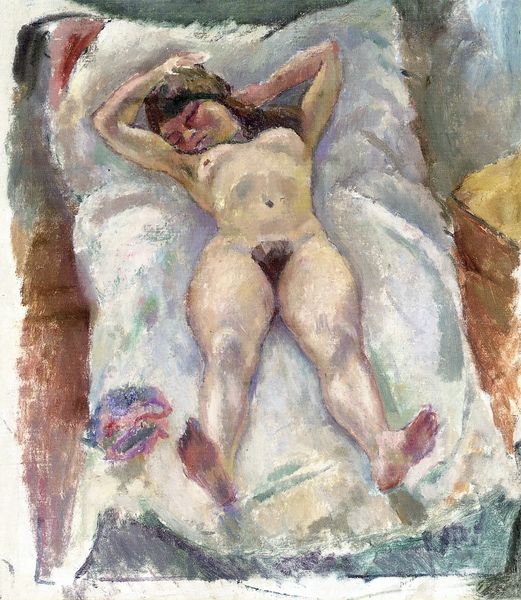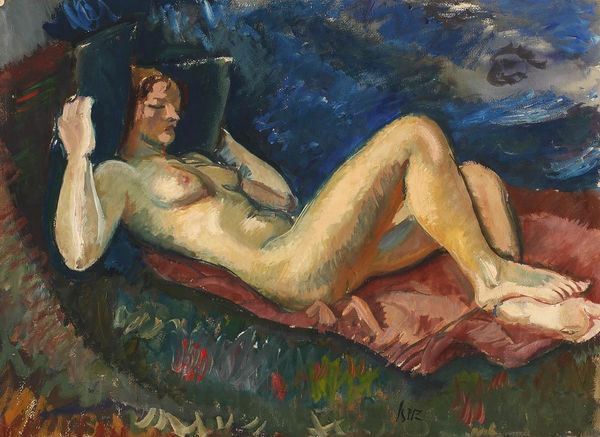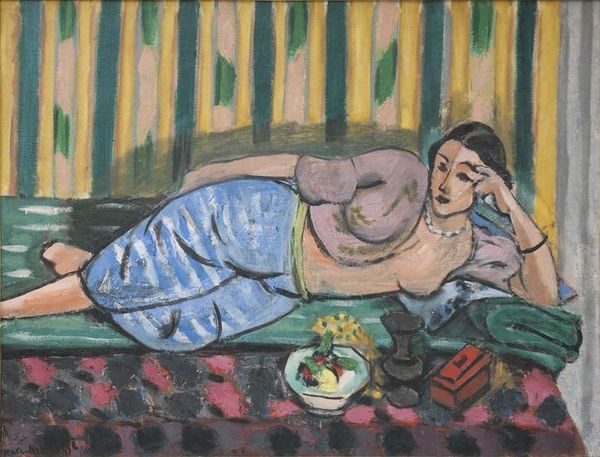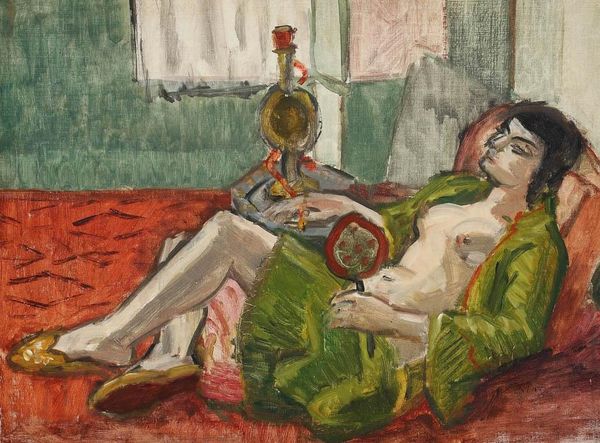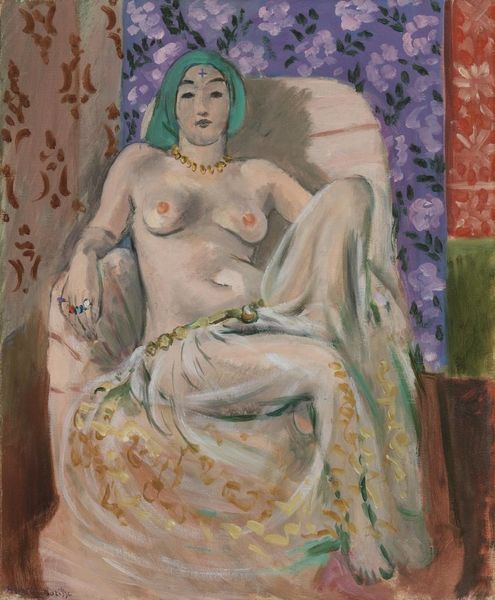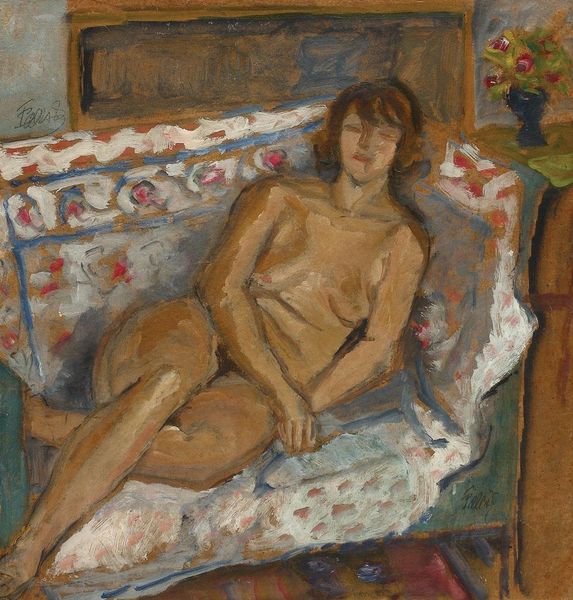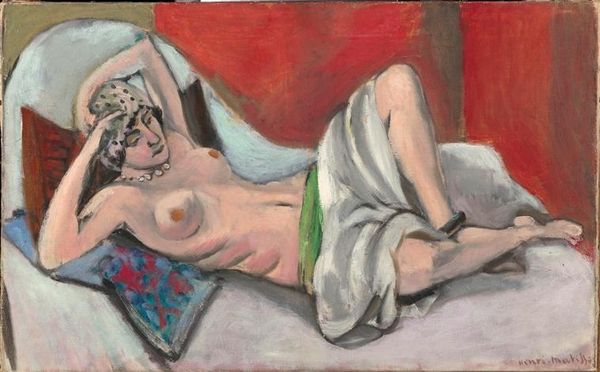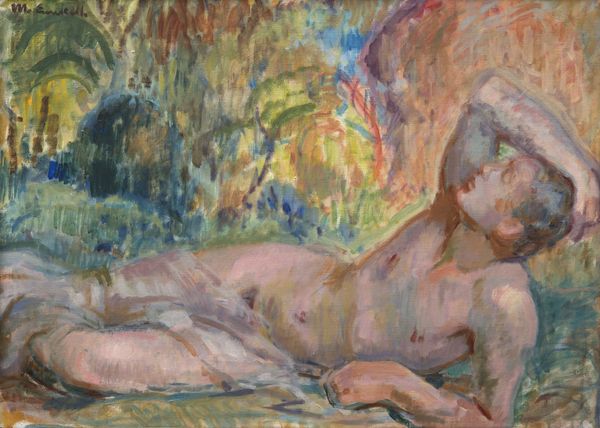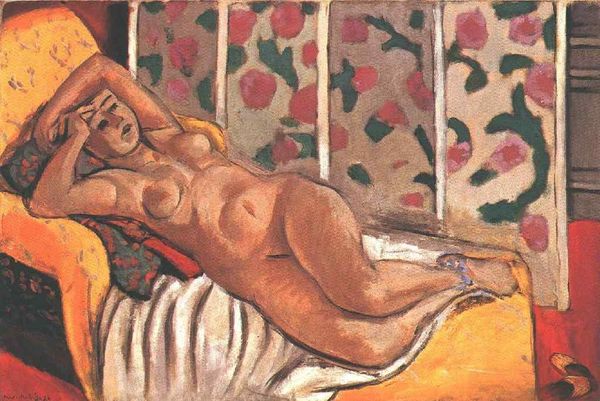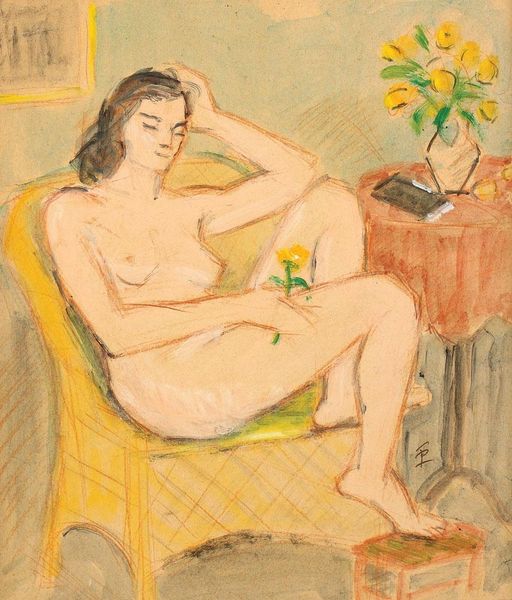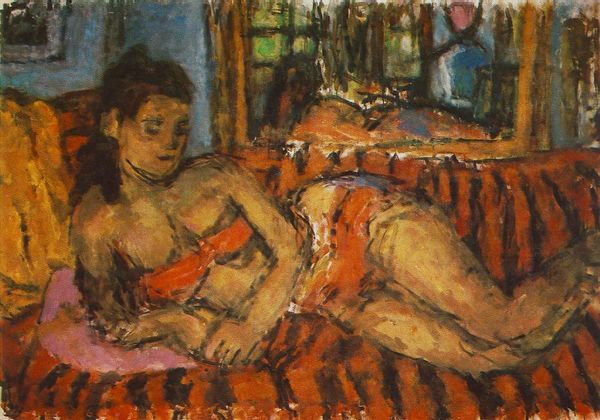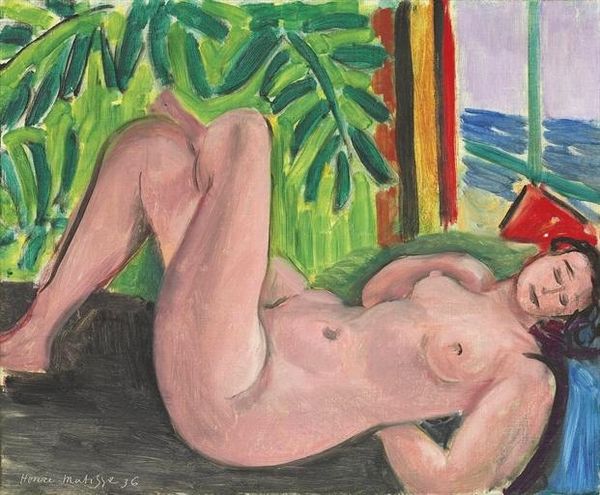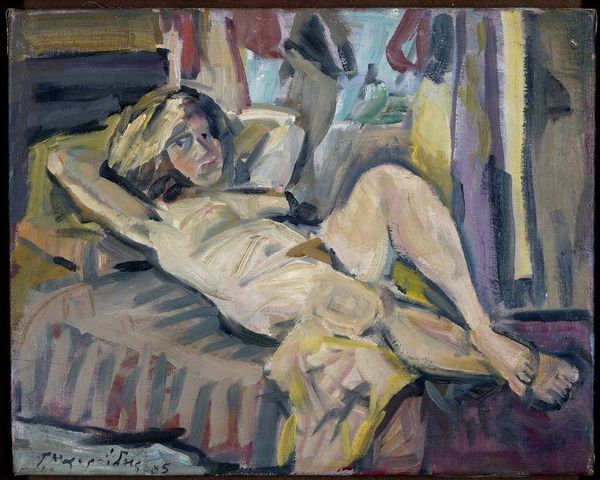
Copyright: Public domain US
Curator: This work has a dreamlike quality to it. I find it unsettlingly peaceful. Editor: It's a beautiful piece of early 20th-century art! What you're looking at is Henri Matisse's "Odalisque Couchée aux Magnolias," painted in 1923. It embodies the spirit of Intimism he was so fond of depicting. Curator: "Odalisque"—there's a charged word, instantly situating the piece within colonial narratives and the male gaze. The woman is displayed passively, framed by exotic floral patterns and a sensual color palette, but let’s talk more about these patterns, I see those also contributing in the male gaze… Editor: It is indeed an important observation to contextualize this in terms of the history of Orientalism and its impact on the representation of women. However, looking at it within Matisse's body of work, you'll see his repeated interest in domestic scenes and portraiture, and how these contributed to his aesthetic goals. Think about the period: The roaring twenties had arrived! Women's liberation from Victorian norms manifested everywhere and of course, also impacted the arts, even if some representations, in retrospect, now give cause for questioning. Curator: But isn't it precisely this tension—the visual pleasure versus the critical awareness of the power dynamics—that makes the painting so compelling and even a bit problematic for the present viewers? Is Matisse merely celebrating the female form, or is he also participating in a broader history of objectification? And by choosing this "odalisque," isn't Matisse referencing that entire historical framework? Editor: That's a great point, as the political context and social meanings inevitably shaped its creation and its initial reception. "Odalisque Couchée aux Magnolias" was made during a period when French artists, including Matisse, were exploring themes of exoticism and sensuality but looking into its provenance it became known, for example, that this particular work appeared at Galerie Bernheim-Jeune. This is indicative of Matisse's rising stature within the art market and a growing demand for his particular style and subjects, shaping its future receptions and audience views in a sense. Curator: It makes you wonder, doesn't it? How much does the artwork reflect or refract the societal norms and biases of its time? Is there really such thing as artistic vision without historical positioning and being impacted? Editor: Precisely! That’s why looking into it today with the benefit of a much wider lens is crucial and interesting to discuss, since we all have access to knowledge about art markets, the concept of orientalism, art production… There’s more depth to this painting now than there might have seemed back then. Curator: Yes, approaching art history this way definitely pushes us to be better informed as we keep engaging with and understanding complex imagery like this. Editor: And maybe that's the most we can do as well!
Comments
No comments
Be the first to comment and join the conversation on the ultimate creative platform.
